A Personal Statement: How Schools Use Learning Management Systems To Create Individualized Learning Journeys
Back in the days of the one-size-fits-all curriculum, teachers knew that only a small subset of any class was grasping the materials they presented. One of the greatest benefits—perhaps the absolute greatest, IMHO—of using technology in our classrooms is the ability to deliver highly relevant, pertinent materials individualized for each child’s learning style and other needs. That’s where a learning management system (LMS) comes in. Used properly, an LMS allows teachers to help each child soar.
HAIKU LEARNING

At the Children’s School in Atlanta (GA) teachers encourage the students (Pre-K through grade 6) to prove their learning through whatever method they choose: making videos, creating wikis, etc. Their LMS, Haiku Learning (haikulearning.com), helps make this possible. The school began using Haiku last fall, and Tony Perez, director of information and innovative technology, is assisting teachers as they learn how to use it to differentiate instruction. “We have a very advanced second-grade student who is able to do third-grade math on his iPad, thanks to Haiku,” says Perez. “In his regular classroom he uses an iPad and a whiteboard app and posts the math lessons in Haiku.” As Perez says, it’s a great example of using the LMS to challenge an individual student. Since the content is assigned to him directly, the other students don’t feel that they’re behind.

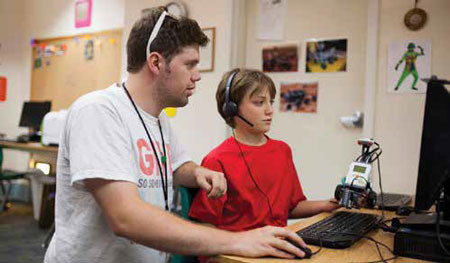
At Perez’s former school, students used Haiku to teach math concepts, such as integers. It started when a sixth grader began creating whiteboard videos and posting them in Haiku. “Soon, we had our own Khan Academy-like channel of student-created tutorials inside of that math class.”
In essence, teachers use Haiku to deepen student engagement. Perez says one of the newest uses his teachers have found is for peer review of work. “We set up rules for commenting and students can post work, read, and comment.”
ITSLEARNING
Elementary students in Michigan select activities that are right on target for wherever they are, thanks to their LMS. The teachers at Fraser (MI) Public Schools, which has 1:1 iPad in grades K through 12, use the LMS itslearning (itslearning.net) for differentiated instruction. In one fourth-grade class, a student taught himself how to make videos and then created lessons on video to share with his classmates. “The student used an app to make a newscast on animals and habitats,” says Kim Keith, elementary curriculum consultant.
Tools and ideas to transform education. Sign up below.


Because an LMS is like a filing cabinet, students and teachers can collaborate more easily. “We build our own lessons and share them,” says Keith. “Teachers share entire courses, then others can pull what they need and tweak the material if necessary.”
An LMS makes it easier for teachers to engage students at all different levels. Those students can open their itslearning folders and access personalized, higher-level lesson units. For instance, English language arts students use their iPads to work through grammar lessons at their own pace. They take an assessment that’s linked to objectives and then move on or go back to relearn what they missed. “We can target where there are gaps and fill them in,” says Keith.
SCHOOLOGY
“The ability to start the class out on the same material and then allow each student to grow individually with the material throughout the year has been great,” says Melissa Stanton, an eighth-grade resource room teacher at Liberty-Benton (OH) Local Schools.
Using an LMS helps these Ohio students become organized, more confident, and stronger readers. Stanton used to spend hundreds of hours and $6,000 a year finding and photocopying reading material for each of her students. “I knew what they needed,” she says. “My nonreaders needed something to be read to them. Others couldn’t fill out worksheets and needed to discuss the material.” When she began using Schoology (schoology.com), she was able to find appropriate reading material online and drag it into each student’s folder. Found resources and no more photocopying! “Once we went to Schoology, I was able to go paperless in a year!”
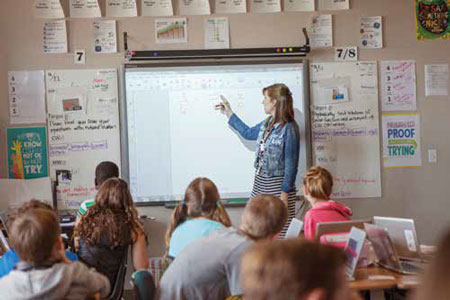
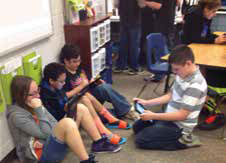
Schoology also helped Stanton’s students overcome organizational issues. “They would set alarms to do homework and have a much easier time reviewing for tests because they knew where to find their materials. I’d use Schoology to ask them to bring things to class and they’d do it. That helped with their confidence, which started skyrocketing.”
One student, who started at a pre-primer reading level, needed to hear material in order to understand. She began creating movies to demonstrate her understanding and uploaded them to Schoology. At the end of the first year, for the first time, all eight of Stanton’s students passed the Ohio achievement exam. “They carried the confidence from my period into all their other periods.”
MIDAS EDUCATION
Middle school students work at their own pace to complete appropriate, personalized lessons. The Lincoln County (OR) School District has a lot of challenges. All of the 6,500 students qualify for free breakfast and lunch, and 85 percent live in poverty. Students come to school unprepared, and as a result there are learning gaps in some grade levels that span multiple years. “We have to personalize/individualize instruction,” says Dr. Steve Boynton, superintendent.
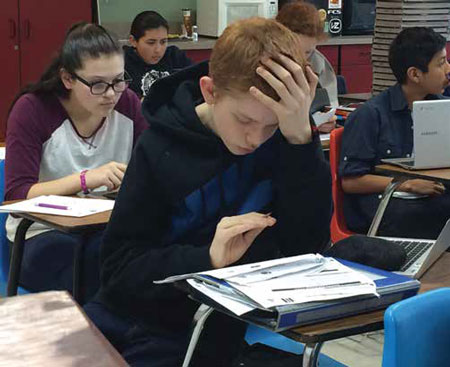
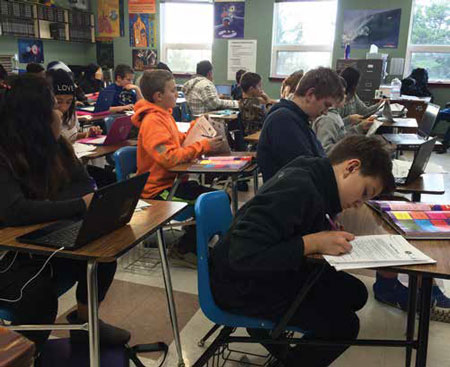
The district uses a variety of systems to deliver instruction, such as Renaissance Learning’s STAR for formative assessment and Compass Learning for curriculum. To make the two different systems work together more cohesively, the district turned to MIDAS Education (midaseducation.com). “We had seven different systems with seven different logins when I first got here,” says Boynton. “MIDAS lets us create a robust individualized system.”
Now, a student takes a STAR test and receives a score. That information gets loaded into MIDAS, which assigns all the materials the student needs, including teacher-generated videos, practice materials, and assessments. MIDAS tells Compass to assign additional materials to keep the student on track. “Once we finish getting everything built and refined, it’s going to be amazing,” says Boynton.
Before MIDAS, it was impossible for teachers to know where every student was in their learning at any given time. Now they know each student’s STAR scores, what they’ve completed, and where they’re struggling. “No more guessing lets us do whatever we need to develop their skills.”
CANVAS
High school students create and share videos, Kahoots and other materials. Five years ago, Monica Arango and Melissa Chriswisser were suffering with an LMS that didn’t allow them to use the iPads in their 1:1 school to deliver instruction. Luckily, the principal of Archbishop Edward A. McCarthy High School in Southwest Ranches (FL) understood their pain and gave them the approval they needed to find a product that worked. Today, the school uses Canvas (canvaslms.com).

Arango and Chriswisser are part-time teachers and part-time technology integrators. The school is in its fifth year as a 1:1 iPad school and has been an Apple Distinguished School for four years.
Once the school began using Canvas, Arango and Chriswisser had to get teachers on board, so they required them to post and collect assignments through Canvas. “We were hoping they’d use Canvas for online quizzes and discussions and more, but we had to start somewhere,” says Arango.
Today, the students use Canvas to direct their learning. They get organized through to-do lists and alerts and set themselves up to be successful. “Using a time stamp is great for college preparation,” says Chriswisser. “They get warned about tests seven days in advance and it goes on their to-do lists.”
In a natural progression, teachers began using Canvas more extensively. When some of them posted presentations, students asked for more. Now teachers share content, and many are recording their lessons during or outside class and posting them. “Students who are hard workers but didn’t have access to the right resources are doing much better because they can watch lessons at home,” says Chriswisser.
In the last three years, students have begun creating Kahoots and other videos and sharing them. Now there’s a Canvas page with student-generated resources, labeled by unit. Students post their own study guides and quizlets on every unit. One student rewrites his notes and posts a screenshot each day. Another makes Inspiration Maps.
Recently, for a lesson on sine and cosine curves, Chriswisser split her students into small groups and asked them to solve four problems and make videos. “If I had given them a worksheet they would’ve just copied each other, but instead they taught each other.” They used Canvas to get the directions and additional resources and to submit their videos.
Both teachers use Canvas to differentiate material, too. “If I want each student to do a different assessment, I can use a question bank to generate a ton of questions, and each student gets different ones,” says Arango.
ADDITIONAL LMSs & LMS TOOLS
Alma (getalma.com): LMS + SIS—a single, integrated platform that unites LMS and SIS data.
Edsby (edsby.com): A cloud-based LMS.
Engrade (engrade.com): Brings the best of LMS and assessment systems together in an instructional management platform.
EXO U (exou.com): A software platform that enables schools to manage their students by delivering engaging experiences spanning desktop and mobile applications.
Knovation (knovationlearning.com): A collection of over 360,000 digital resources that covers all subjects and grades.
Odysseyware (odysseyware.com): An LMS with research-based core curriculum, assessments, and learning tools.
Otus (otus.com): An LMS that combines a data warehouse with a collection of classroom management tools.
